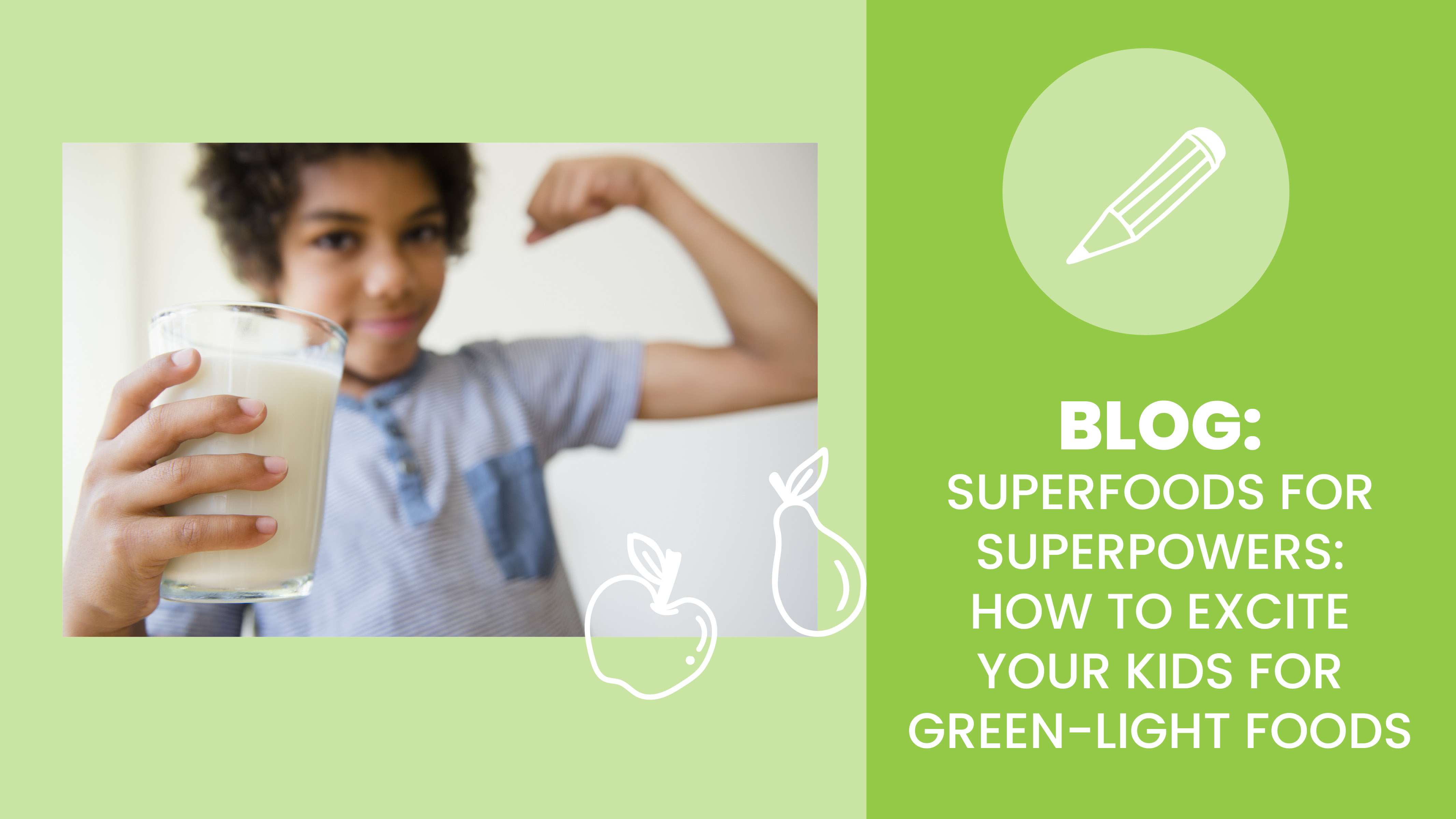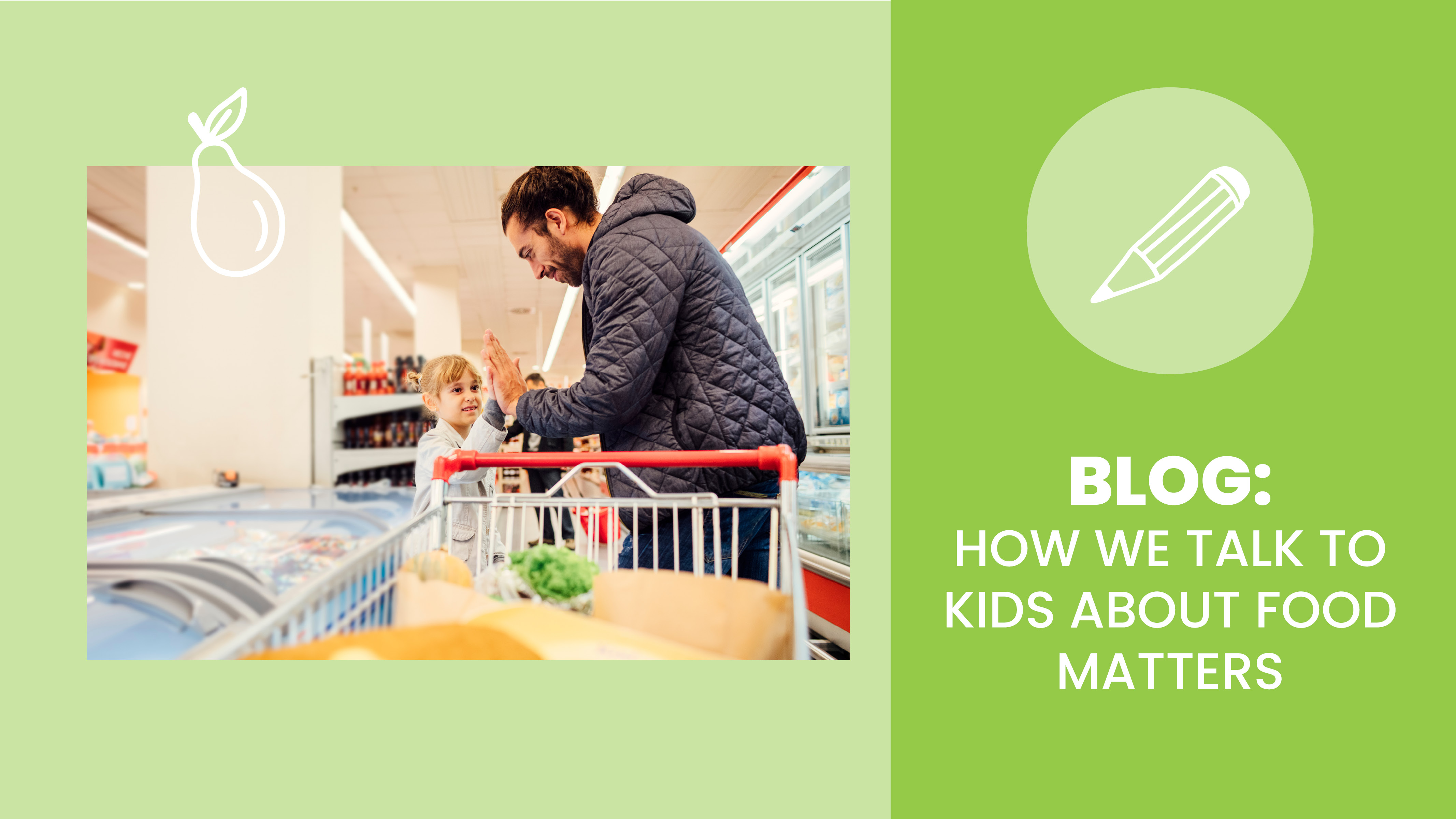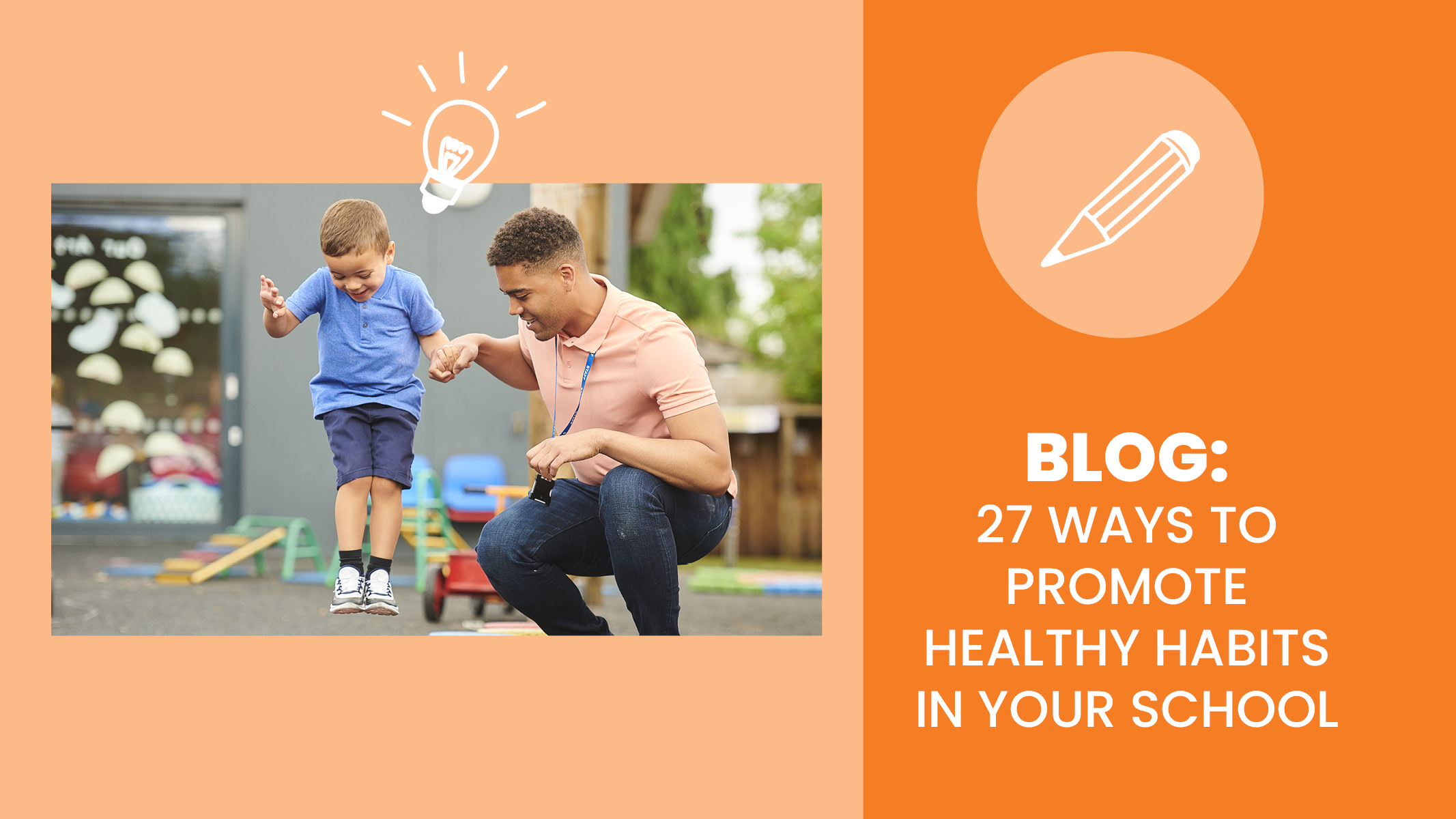Making healthy choices for your family’s meals can be hard, but with a few essential building blocks of nutrition, we can make it easier! Sanford fit uses the United States Department of Agriculture (USDA) as a source of reliable information on nutrition and healthy eating for families. We also gamify food choices by using a stoplight model with kids. With so many options for food and drinks, it’s important to stop and think about what foods and drinks do for the body and brain. Let’s talk about it!
What does it mean to make nutritious food choices? The first step to understanding the impact of nutrition is to understand what a nutritious choice consists of. At fit, we use the Stoplight Model to understand the different nutritious choices you have. Here’s how it works:
- Green-light foods have the highest levels of nutrition and give the body and brain the most fuel. Examples of green-light foods include whole fruits and vegetables, whole grain pastas and breads, lean meats, milk, and water.
- Yellow-light foods have some nutrition, but not as much as green-light foods do. Examples of yellow-light foods include dried fruit, flavored yogurt, 100% fruit juice, granola bars, and veggies with sauce.
- Red-light foods have the lowest nutritional value for the brain and body. Foods in the red-light category include chips, candy, fried food, cake, donuts, and soda.
With the Stoplight Model, one of the goals is for kids to remember that food is just food and it’s meant to fuel their bodies and brains. So how can you gamify the Stoplight Model even more to encourage nutritional choices while educating your kiddo? Explaining that certain foods will have specific vitamins and minerals might seem like the obvious answer, however, that abstract thinking might not resonate with kids. Instead, it can be helpful to give kids the literal benefits of food in simple terms.
Here’s how you can explain how many green-light foods fuel your kids’ bodies and brains:
“Red foods make your heart powerful and strong!” Foods like red bell peppers, tomatoes, raspberries, apples, watermelon, and cherries are full of vitamins A and C, as well as fiber, to boost heart health.
“Orange foods give you super vision!” Carrots, squash, cantaloupe, pumpkins, peaches, and orange peppers are loaded with beta carotene and vitamin A, both super important for good eyesight.
“Yellow foods heal your cuts and keep your stomach happy!” Bananas, yellow bell peppers, pineapples, corn, lemons, and potatoes have lots of fiber and vitamin B6 to help with digestion and general health support.
“Green foods give you super immunity!” Greens such as spinach, kale, broccoli, pears, kiwis, green apples, grapes, and cucumbers all have nutrients to help fight off sicknesses and with plenty of fiber, they help support healthy digestion.
“Blue and purple foods make your brain more powerful!” Blueberries, grapes, blackberries, purple cabbage, eggplants, and raisins are all full of antioxidants and fiber that will keep your child full helping their brain stay focused and charged.
“White foods give you super energy!” Garlic, onions, coconut, cauliflower, and milk are full of nutrients like calcium and potassium, which will keep the body energized. They also have lots of vitamins that can help the brain stay focused and help skin heal. Other types of white foods like bread and rice are important too. Whole grains can be an excellent source of fiber and provide the body and brain with complex carbohydrates to keep kiddos active throughout the day.
“Brown and black foods make your heart super strong and give you powerful muscles!” Black beans and lentils are legumes that are full of amino acids and proteins that help skin heal and help grow strong muscles. Other neutral-colored foods like nuts and sunflower seeds are full of proteins and healthy fats along with vitamins and minerals which can reduce the risk of heart disease and diabetes.
Overall, making nutritious choices and talking with your kids about food can be challenging, but they remain important. Incorporating fun, catchy activities like sharing these statements with your kids or adding this activity on how to practice eating the rainbow can be simple, yet effective ways to excite your kids for green-light foods.
No matter what, remember to start small and keep it simple for any kids under the age of 5. When kids are older, you can start introducing more complex topics such as reading nutrition labels and choosing portion sizes. For more tips on how to talk to your kids about food, check out this article.
Looking for More?
Which is Best? Fresh Versus Frozen or Canned Fruits and Vegetables


